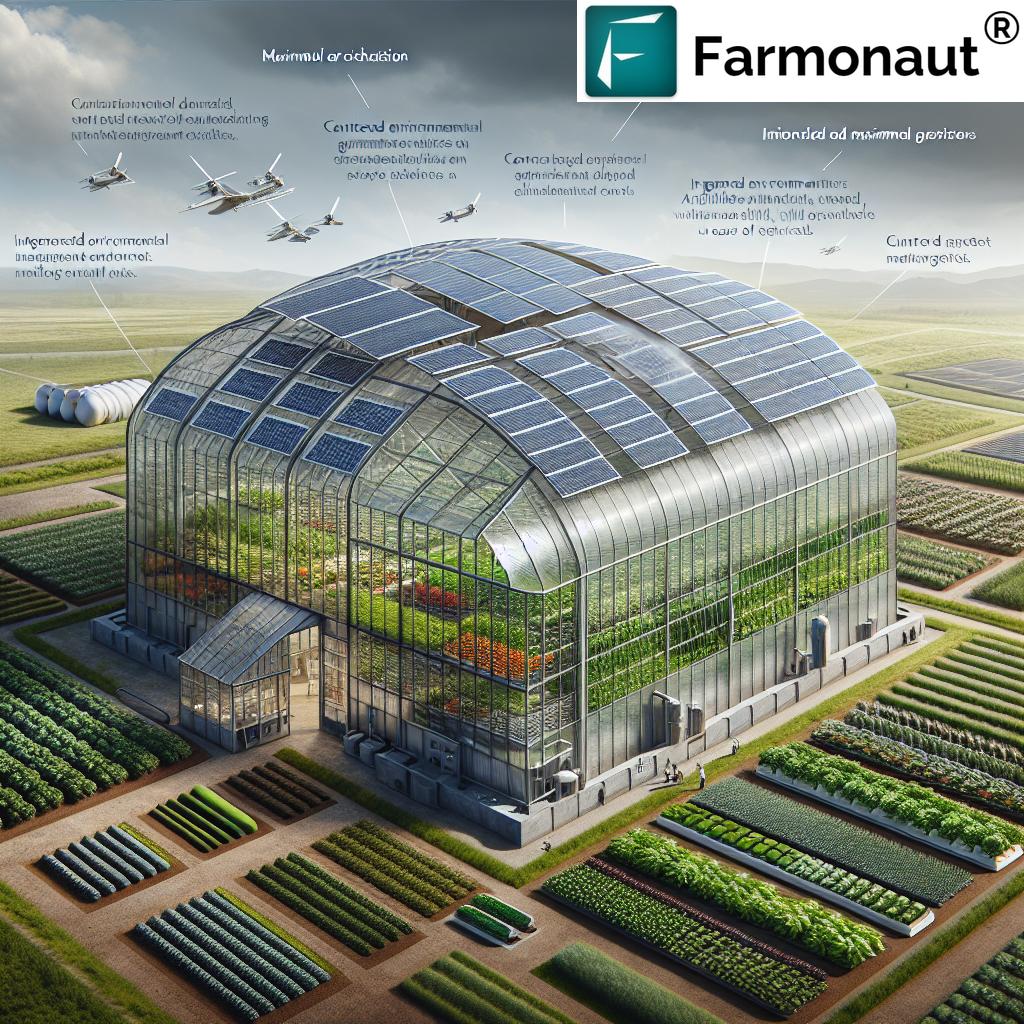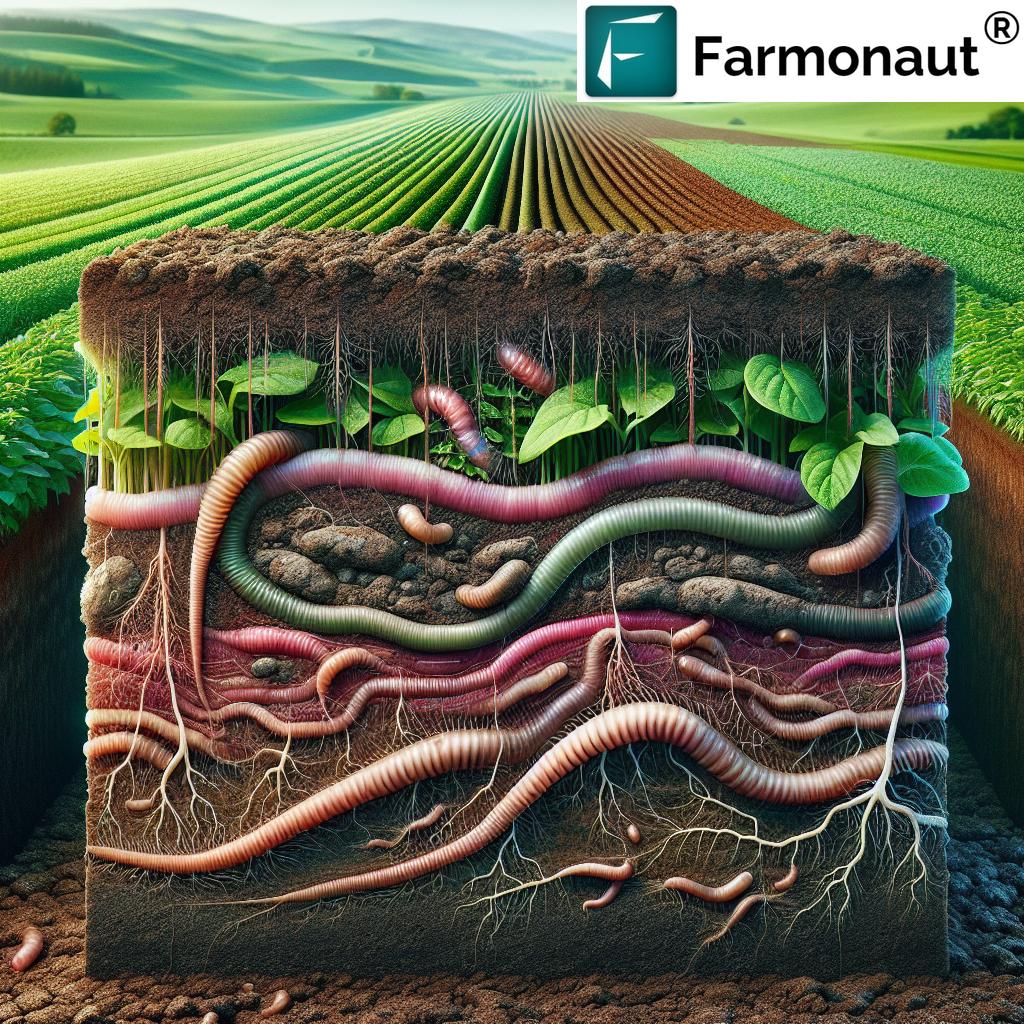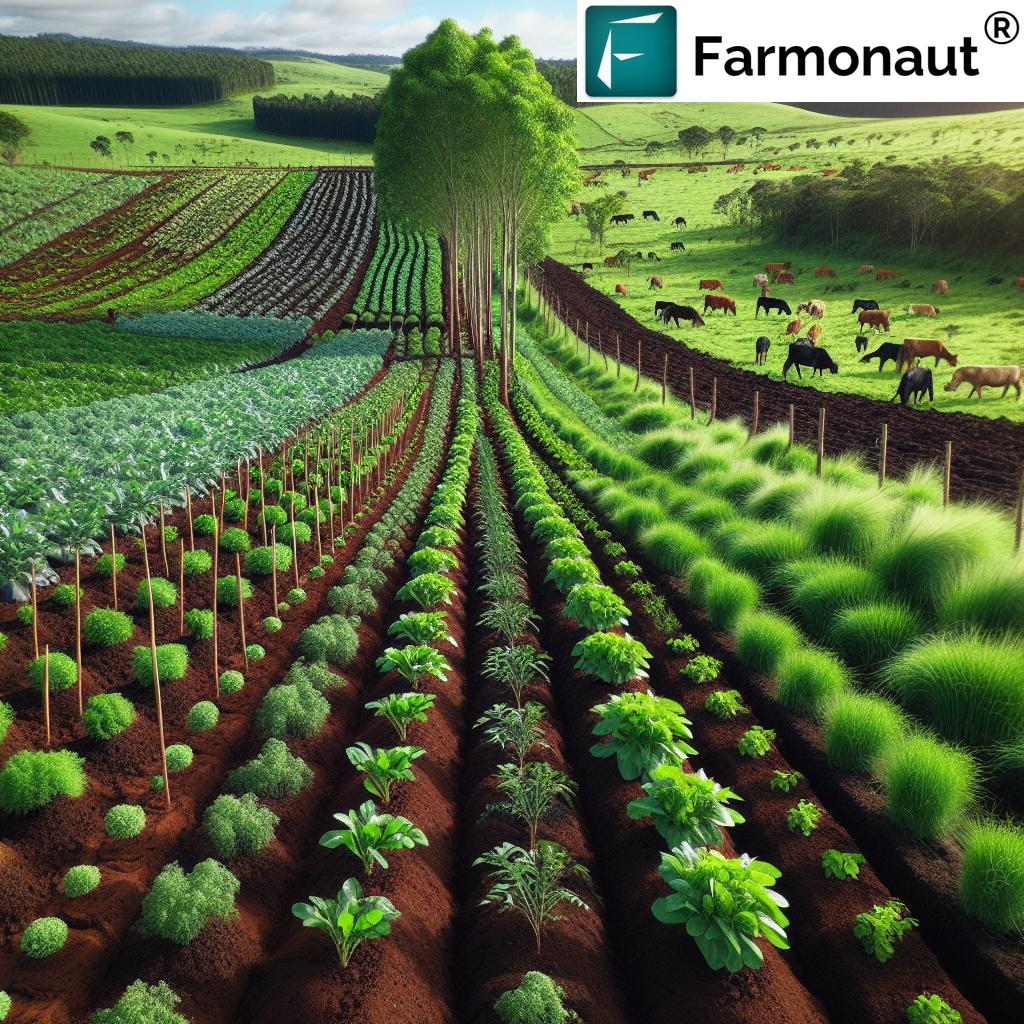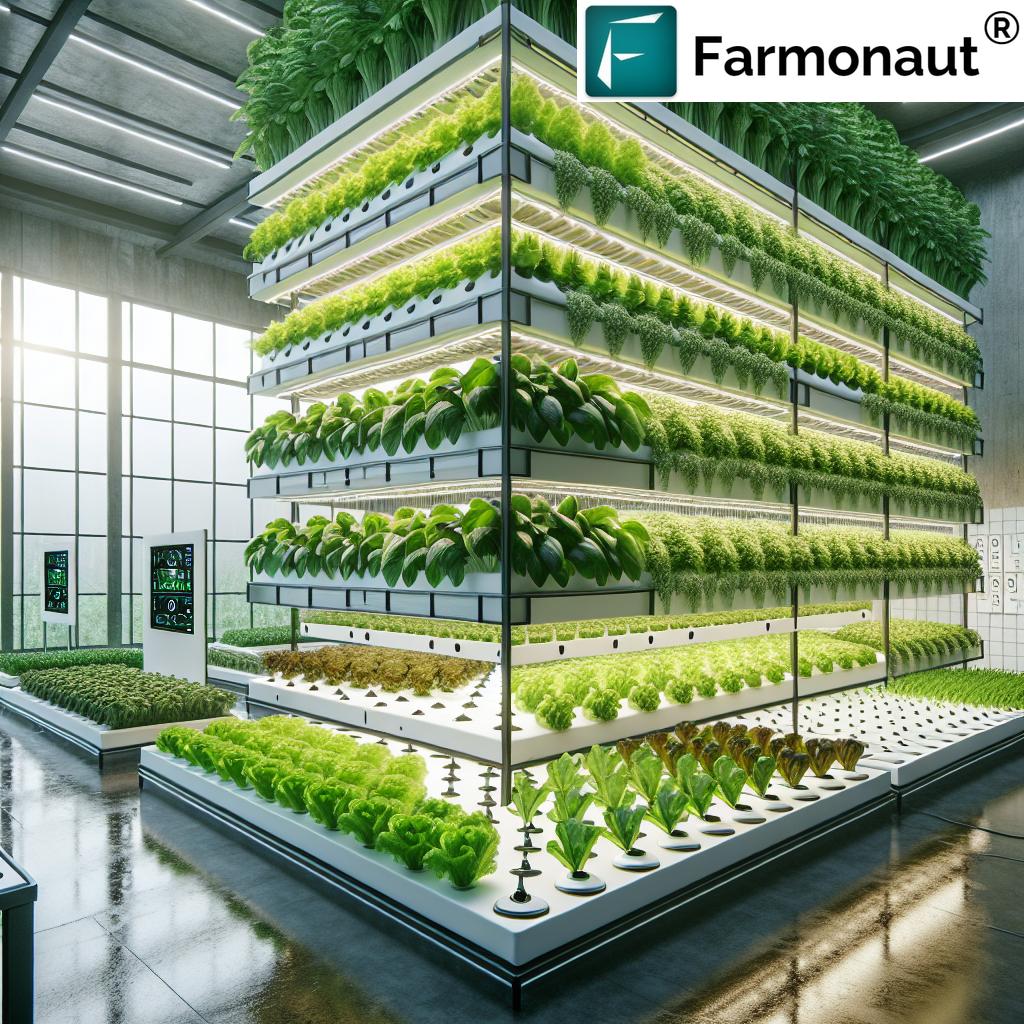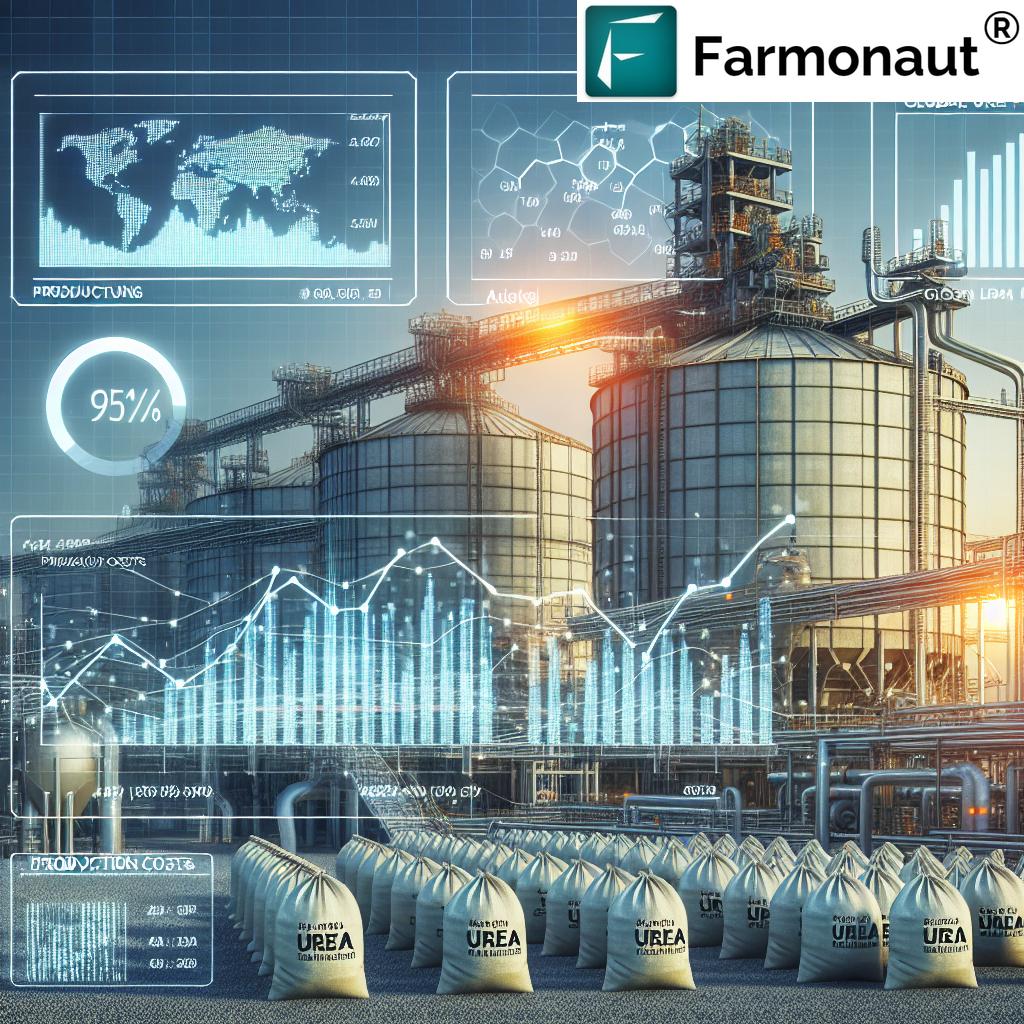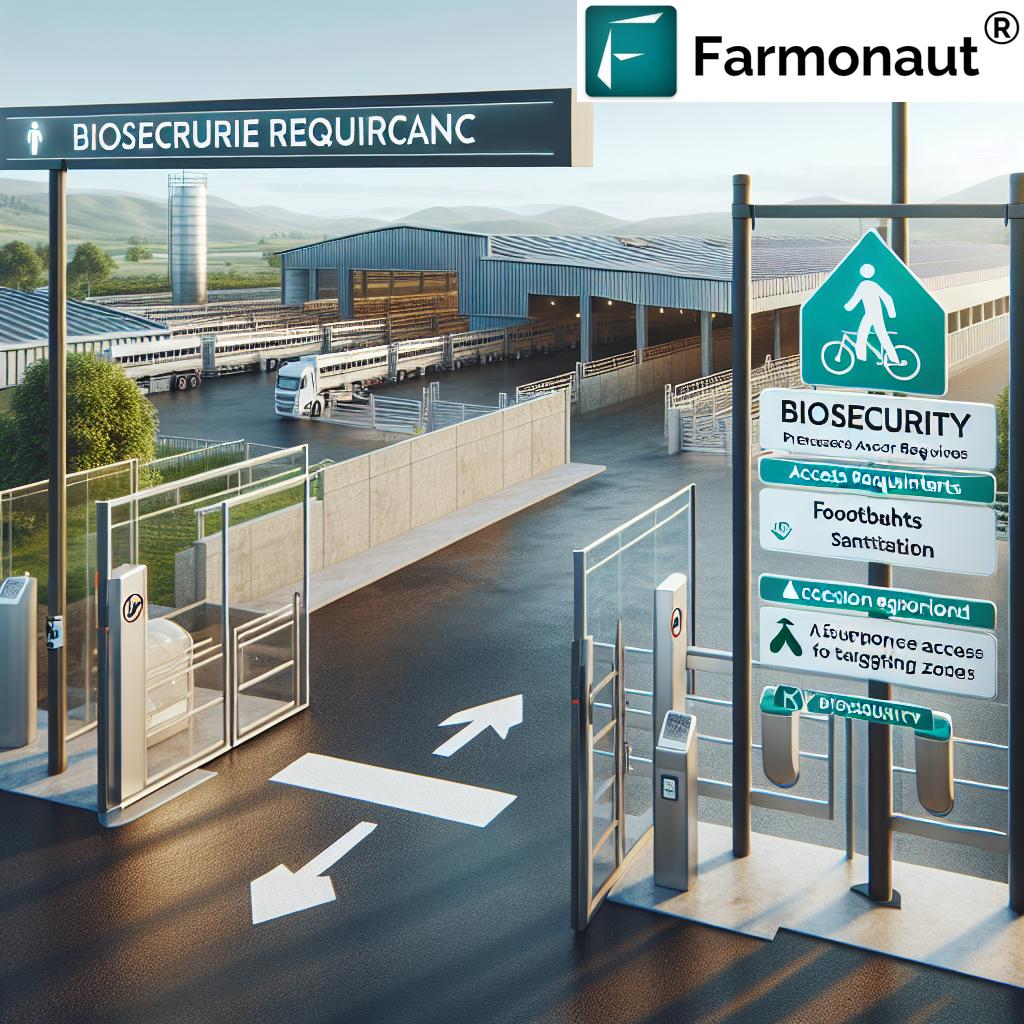Greenhouse Technology: Discover 7 Yield-Boosting Secrets!
Table of Contents
- Introduction
- Evolution of Greenhouse Technology
- Key Components of Modern Greenhouses
- Comparison Table: Greenhouse Technologies & Yield Impact
- Benefits of Greenhouse Technology
- Farmonaut and the Future of Precision Farming
- Challenges & Future Directions of Greenhouse Farming
- FAQ: Greenhouse Technology
- Conclusion
- Farmonaut Subscriptions
Introduction: The Revolution of Greenhouse Technology in Modern Agriculture
Greenhouse technology stands at the forefront of global agricultural innovation. As our world faces rising food demands and increased climate uncertainty, optimizing plant growth and crop yields in controlled environments is more important than ever. Unlike traditional farming, greenhouses use advanced technology and sustainable methods to create ideal conditions for crops, dramatically reducing resource usage, enhancing yields, and promoting long-term environmental health.
In this comprehensive guide, we uncover seven yield-boosting secrets that define the future of controlled environment agriculture. We’ll highlight key advancements, integration methods, optimal resource management, and sustainability, explaining how these approaches are transforming farming, agriculture, and forestry worldwide.
Whether we are commercial growers, tech enthusiasts, agricultural leaders, or sustainability advocates, understanding the intricacies of modern greenhouses is essential for success in today’s evolving agricultural landscape.
Evolution of Greenhouse Technology
The journey of greenhouse technology dates back to the ancient civilizations, such as the Romans and Egyptians, who used rudimentary greenhouse structures to extend growing seasons for prized fruits and vegetables. These early forms featured simple transparent materials and basic environmental management.
Over the centuries, advancements in materials—from glass to transparent plastics—enabled increased sunlight penetration and more efficient heat retention. With the introduction of ventilation systems and innovative design features, greenhouses could regulate temperature, humidity, and airflow, optimizing the plant growth environment.
Today’s greenhouses have transformed into sophisticated, high-tech systems. The integration of automated climate control, data-driven management, AI, blockchain, and renewable energy sources has revolutionized how we produce food. Modern greenhouses are capable of precise environmental management, maximizing plant health and crop yields even in harsh conditions, highlighting the significance of technology and innovation in modern agriculture.
From simple shelters to automated, resource-efficient complexes, greenhouses now play a pivotal role in food security, environmental sustainability, and the global agricultural economy.
7 Yield-Boosting Secrets: Key Components of Modern Greenhouses
Our understanding and application of greenhouse technology have matured substantially, giving rise to highly productive, resource-efficient, and sustainable growing environments. Let’s explore the crucial components and methods that drive optimal crop production and sustainable resource usage in today’s advanced greenhouses.
1. Automated Climate Control Systems
Automated climate control is the backbone of efficient greenhouse management. It regulates key parameters—temperature, humidity, CO₂ levels, and air circulation—to create optimal growing conditions year-round.
- Technology Integration: Sensor networks and IoT devices continuously monitor the environment, automatically adjusting heating, cooling, ventilation, and misting systems for precise control.
- Benefits: Automated systems eliminate fluctuations in greenhouse conditions caused by external weather, leading to consistent, vigorous plant growth and reducing crop losses due to climate variability.
- Energy Efficiency: Efficient use of energy for heating, cooling, and ventilation significantly reduces operational costs, making energy efficient greenhouses a reality.
By maintaining ideal climate conditions, greenhouses boost yields, enhance produce quality, and minimize disorders associated with temperature stress or humidity imbalances. Such control is vital to year-round crop production and smooth market supply.
Did you know? Many advanced greenhouses now use AI-driven control algorithms to optimize resource management and energy consumption.
2. Hydroponic & Aquaponic Systems: Soilless Cultivation Solutions
In recent decades, hydroponic greenhouse systems and aquaponics have emerged as revolutionary cultivation methods, freeing plant roots from soil while providing direct access to precisely formulated nutrients and oxygen in water-based solutions.
- Hydroponics: Plants grow in nutrient-rich water; greenhouse systems often recover and recycle excess solution, reducing water usage by up to 90% over traditional agriculture.
- Benefits: Accelerated plant growth, quicker harvests, and increased yields with less susceptibility to soil-borne pests and diseases.
- Aquaponics: An integration with fish farming—plants use fish waste as nutrients while the water is recirculated, further reducing waste and improving sustainability.
- Resource Efficiency: Both systems excel at conserving water, optimizing fertilizer usage, and greatly reducing chemical runoff.
Hydroponic greenhouse systems are a prime example of how technology and environmental innovation work together to enhance sustainability and overcome challenges inherent to traditional, soil-based agriculture.
3. LED & Artificial Lighting: Enhancing Growth with Tailored Illumination
LED lighting technology represents a milestone for modern greenhouses, providing customizable, energy-efficient illumination that supplements natural sunlight and extends growing periods.
- Features:
- Energy Efficiency: LEDs use up to 60% less energy than traditional lighting—making them crucial for sustainable greenhouse farming.
- Tailored Light Spectrum: LED systems can be finely tuned (red/blue wavelengths) to optimize photosynthesis and enhance plant growth at every stage.
- Season Extension: Artificial lighting allows off-season production and enables year-round supply to the market.
- Benefits: Consistent lighting supports stronger crops, higher yields, and uniform produce quality.
By integrating advanced LED lighting solutions with greenhouse climate control, we achieve optimal plant growth and consistent yield improvement in a wide range of climates.
4. Automated Irrigation Solutions
Automated irrigation systems are vital for precision water management in greenhouses. Innovations such as drip, mist, and ebb-and-flow techniques deliver water and nutrients precisely to plant roots, minimizing evaporation and ensuring optimal hydration.
- Water Conservation: Advanced irrigation technologies reduce water usage by up to 30%, critical for sustainability especially in regions facing water scarcity.
- Precision Delivery: Irrigation schedules and volumes are automatically adjusted according to soil moisture data, weather conditions, and crop requirements.
- Resource Savings: Less water and fertilizer are wasted, contributing to lower costs and environmental impact.
By integrating sensor-based irrigation with real-time large-scale farm management solutions, growers can automate water distribution at scale, promoting sustainable food production and efficient resource use.
5. Integrated Pest Management (IPM) in Greenhouses
Integrated Pest Management (IPM) within greenhouses uses a combination of physical, biological, and (where necessary) minimal chemical control techniques to protect plants from pests and diseases.
- Physical Barriers: Greenhouse structures inherently shield crops from many outdoor pests and diseases.
- Biological Control: Beneficial insects (like ladybugs) are introduced to control harmful pests, reducing dependence on chemical pesticides.
- Environment Control: Automated systems regulate humidity and airflow, preventing fungal or bacterial outbreaks.
- Data-Driven Monitoring: Sensors detect early pest activity, enabling rapid intervention through AI-based advisory and pest management tools.
By promoting a healthier, eco-friendly ecosystem and limiting pesticide use, integrated pest management in greenhouses elevates produce quality, food safety, and sustainability.
6. Data Analytics & Artificial Intelligence in Greenhouse Management
Modern greenhouses leverage the power of data analytics, artificial intelligence (AI), and IoT to drive optimizations and improve decision-making across all aspects of farming.
- Real-Time Monitoring: Sensors capture continuous data on temperature, humidity, light intensity, soil moisture, and CO₂ levels.
- AI-Driven Insights: Algorithms analyze trends to predict crop yields, identify early signs of stress or disease, and recommend tailored adjustments in irrigation, lighting, and ventilation.
- Automated Alerts & Actions: Crop health alerts, weather advisories, and management suggestions are delivered to growers’ devices for proactive resource optimization.
- Blockchain Traceability: Integration with blockchain platforms, such as
Farmonaut’s product traceability solution, enhances transparency in supply chains, ensuring produce quality from farm to table.
Greenhouse automation solutions are transforming traditional, labor-intensive farming into data-driven, intelligent enterprises with higher productivity and resource efficiency.
7. Renewable Energy Integration & Carbon Footprinting
Renewable energy technologies like solar panels, geothermal, and wind power are powering the most sustainable greenhouses, drastically reducing carbon emissions and operational costs.
- Solar-Powered Operations: Photovoltaic panels generate clean electricity for lighting, climate control, and irrigation.
- Energy-Efficient Greenhouses: Advanced insulation and energy management systems ensure minimal heat loss, reducing reliance on fossil fuels.
- Carbon Footprint Tracking: Tools such as Farmonaut’s carbon footprint calculator give growers the insights to measure, manage, and reduce greenhouse gas emissions throughout production.
By integrating renewables and carbon tracking into greenhouse design and daily operations, we enable truly sustainable greenhouse farming, critical for compliance and the environmental demands of the future.
Comparison Table: Greenhouse Technologies and Their Impact on Yield
| Greenhouse Technology/Method | How It Works | Estimated Yield Improvement (%) | Resource Optimization (Water/Fertilizer % Saved) | Sustainability Impact |
|---|---|---|---|---|
| Automated Climate Control | Regulates temp/humidity/CO₂ via sensors & automation | 20–30% | 15% water, 10% energy | Stable growing environment, reduced energy use |
| Hydroponic Greenhouse Systems | Soilless; roots in nutrient-rich water | 35–50% | Up to 90% water, 30% fertilizer | Less chemical runoff, higher land-use efficiency |
| LED/Artificial Lighting | Custom light spectra for photosynthesis, season extension | 15–20% | 60% energy (compared to traditional lights) | Lowers carbon footprint, supports year-round production |
| Automated Irrigation | Precise, sensor-based water/nutrient delivery | 10–15% | Up to 30% water savings | Promotes water conservation, reduces erosion |
| Integrated Pest Management (IPM) | Biological/physical control, minimal chemicals | 5–10% | 20% reduction in pesticide use | Healthier crops, improved ecosystem integrity |
| Data Analytics and AI | Sensor-driven insights, predictive analysis, automation | 10–25% | 15% resource optimization (inputs) | Prevents loss, supports smarter management |
| Renewable Energy Integration | Solar/geothermal for powering systems | Indirect (1–5%) | 80% reduction in greenhouse gas emissions | Carbon neutral or negative operations |
Benefits of Greenhouse Technology in Controlled Environment Agriculture
The integration of advanced greenhouse technology brings forth a wealth of benefits that ripple across all aspects of agriculture, farming, and forestry. Here’s how modern greenhouses redefine the future of food production:
- Increased Crop Yields and Quality
Through consistent environmental control, greenhouse crop yields are boosted by 20–50% (depending on systems used), with improved produce uniformity, color, size, and taste. - Resource Efficiency
Conservation methods drastically cut water, fertilizer, and energy usage, ensuring cost-effective, planet-friendly production. - Year-Round Production
Greenhouses allow uninterrupted cultivation cycles, regardless of weather or seasons, ensuring stable market supply even during climate extremes. - Pest and Disease Management
The controlled environment of greenhouses naturally limits pest/disease outbreaks, lowering reliance on synthetic pesticides and protecting both ecosystems and farm workers. - Sustainability & Eco-Friendliness
By integrating renewable energy sources, recycling programs, and advanced control systems, modern greenhouses actively promote carbon reduction and environmental stewardship. - Economic Viability
Higher yields and lower resource input reduce production costs and increase profitability for both smallholder and commercial growers. - Data-Driven Decision Making
With AI-based crop monitoring and real-time analytics, growers make faster, informed choices—maximizing productivity, efficiency, and adaptability.
Integrating all these benefits, controlled environment agriculture (CEA) is not just a technology but a strategic approach to sustainable, resilient, and high-yield food systems.
Farmonaut Satellite & Weather API gives developers real-time, data-rich crop insights—perfect for integration with advanced greenhouse monitoring and farm management tools.
API Developer Docs enable seamless access to historical and up-to-the-minute environmental data, essential for agritech developers and research organizations.
Farmonaut Crop Loan & Insurance Solutions utilize satellite-based farm verification, reducing fraud and increasing financial accessibility for farmers deploying high-tech, greenhouse solutions.
Farmonaut and the Future of Precision Farming
As agricultural needs evolve, the ability to monitor, analyze, and optimize greenhouse conditions becomes central to success. Farmonaut empowers growers worldwide by making precision agriculture affordable and accessible—streamlining resource management, crop health, and environmental sustainability through advanced, satellite-based technologies.
-
Satellite Crop Health Monitoring:
Farmonaut harnesses multispectral imagery to track NDVI, soil moisture, and real-time plant health, delivering actionable insights for precise irrigation, fertilizer usage, and pest management. -
AI-Based Advisory with Jeevn:
Our AI-driven system provides personalized, field-specific advisory for all climate, resource, and production challenges in greenhouses and open fields alike. -
Blockchain-Based Product Traceability:
Transparently document every stage of your produce’s journey, enhancing authenticity and consumer trust—perfect for modern, high-value greenhouse crops. -
Fleet & Resource Management:
Optimize equipment usage, logistics, and transportation, vital for large-scale greenhouse and open-field operations. -
Carbon Footprinting:
Monitor and manage your operation’s carbon impact for greater compliance, brand value, and sustainability.
Whether you are an individual grower, agribusiness, academic, or policymaker, Farmonaut’s flexible, scalable subscription model brings world-class agricultural intelligence to your fingertips, accessible from any web or mobile device.
Challenges and Future Directions in Greenhouse Farming
While the benefits of greenhouse technology are remarkable, there are significant challenges to be addressed as we scale up and diversify.
-
High Initial Investment:
Advanced systems require substantial up-front capital, which can deter smallholder or resource-constrained growers. -
Technical Complexity:
Sophisticated automation and management tools demand specialized knowledge, training, and regular maintenance. -
Energy Demand:
Despite high efficiency, intensive climate and lighting control may increase total energy requirements—making sustainable power integration urgent. -
Skilled Labor Shortage:
The future of greenhouse operations depends on a skilled workforce trained in data management, system calibration, and high-tech maintenance.
The future of greenhouse technology lies in further automation, AI-driven decision-making, smarter resource use, and the integration of renewable energy sources to reduce costs and enhance sustainability. Ongoing research and technology development are making robust, high-output greenhouses more accessible to farms of every size, globally.
FAQ: Greenhouse Technology
What is greenhouse technology?
Greenhouse technology refers to the use of controlled structures and advanced systems to optimize plant growth conditions. This includes climate control, soilless cultivation, artificial lighting, and automation to boost yields while minimizing resource usage.
How does greenhouse technology increase crop yields?
By providing a stable, controlled environment and supplying plants with optimal amounts of light, water, nutrients, and CO₂, greenhouses enable faster, healthier, and more reliable plant growth—significantly increasing crop yields and quality.
What are the resource-saving benefits of greenhouses?
Modern greenhouses reduce water use by up to 30%, lower fertilizer wastage, and minimize energy consumption through systems like automated irrigation and LED lighting. Advanced monitoring and control ensure that every input is used efficiently.
What is integrated pest management (IPM) in greenhouses?
IPM utilizes physical barriers, biological controls (such as predatory insects), and minimal chemicals to manage pests and diseases. This reduces pesticide usage and supports healthier crops and environments.
Can small farms benefit from greenhouse technology?
Yes! While advanced greenhouses require initial investment, technologies like Farmonaut’s monitoring and advisory solutions are designed to be affordable and scalable for smallholder, medium, and large farms alike.
How does AI improve greenhouse management?
AI analyzes real-time sensor data to deliver proactive recommendations—from irrigation and fertigation timing to pest alerts—making management more accurate, efficient, and timely.
Affordable Farmonaut Subscription Plans
Unlock cost-effective, advanced agricultural technology with Farmonaut’s flexible, transparent subscription options—empowering you to manage greenhouse or open-field farms with unmatched accuracy, sustainability, and ease.
Conclusion: The Significance of Greenhouse Technology in Modern Agriculture
In summary, greenhouse technology has revolutionized not just how we grow, but how we feed the world. Through controlled environment agriculture, resource-efficient methods, and intelligent management, modern greenhouses enable growers to boost yields, conserve water and energy, minimize chemical inputs, and promote long-term sustainability.
By embracing automated climate control, hydroponic greenhouse systems, data-driven management, and renewable energy integration, farmers and agribusinesses can respond to the challenges of population growth, climate uncertainty, and environmental stewardship. The journey forward will require innovation, investment, and the support of tools like those offered by Farmonaut—paving the way for a greener, more productive, and sustainable future in agriculture and forestry.
Whether you operate a small farm or manage a large commercial greenhouse, the “7 yield-boosting secrets” described above can help you maximize efficiency, optimize resources, and secure your place in the future of modern, sustainable food production.



